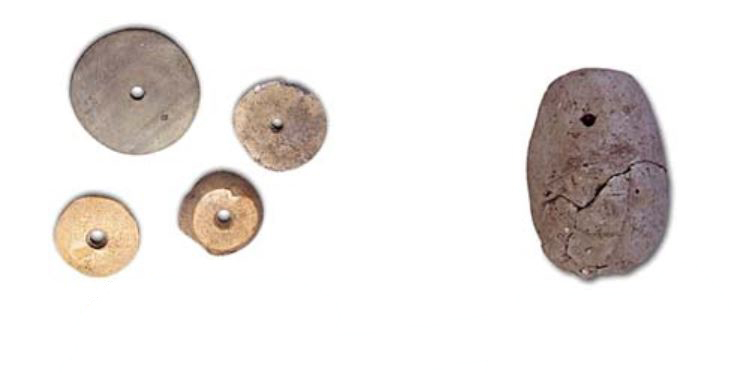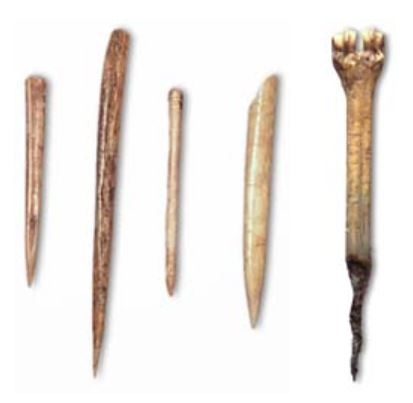- Home
- Hârsova, the chalcolithic village
- Sustenance
- Livestock
The semi-steppe region of the Danube plateau offering the pastures necessary for herds of sheep and goat, highlighted by osteological studies.
The breeding of already domesticated animals permitted the Gumelnita population at Hârsova to sustain an abundant diet of meat, but also to benefit from other vital materials : milk, wool, skins, and parts for tool-making such as horn and bone. The Ovicaprine family of sheep and goat seem to have made up the majority of the domesticated animals, the sheep outnumbering the goats within the herd.
Because of a certain number of characteristic tools discovered at the tell (fusaïoles and stone-weights for weaving), we can suppose that the sheep's wool was spun and then woven for clothes.
Fusaïoles of bone and stone (from the femur bone) indicating spinning (of wool ?).
Clay weights for cloth work, proof of weaving.
The small-sized Bovine, were slaughtered as adults, probably after having been useful to the community by having calves, giving milk and serving as beasts of burden.
Their bones, notably the metapodes, had been used for tool-making. Pigs, most probably raised at least in part as free-roaming livestock, were slaughtered at optimal weight.
Certain bones of domesticated animals were used for making tools, such as these punches made from the metapodes of cows (left) and this copper punch with a handle made from the metatarsis of a sheep (right).


